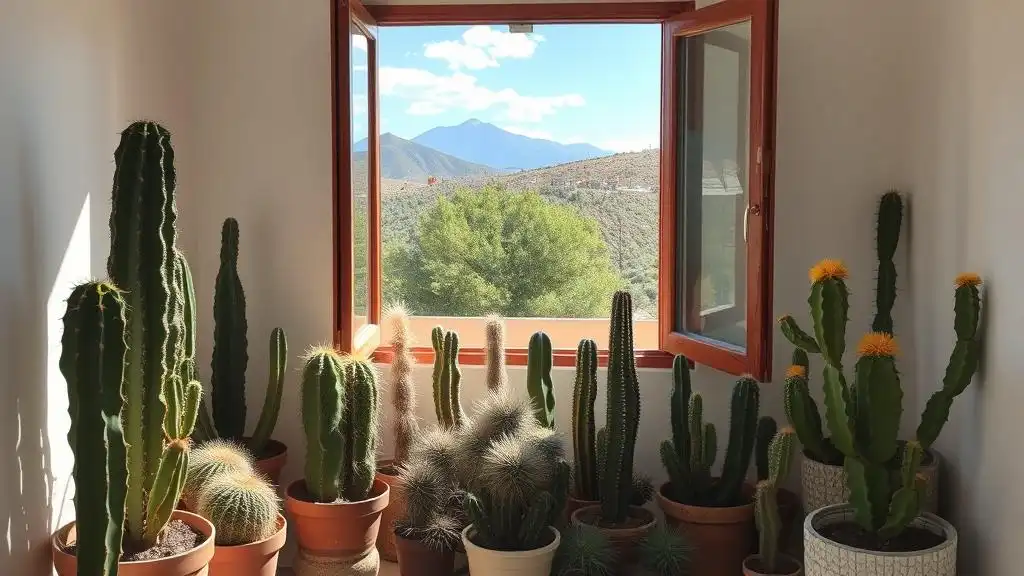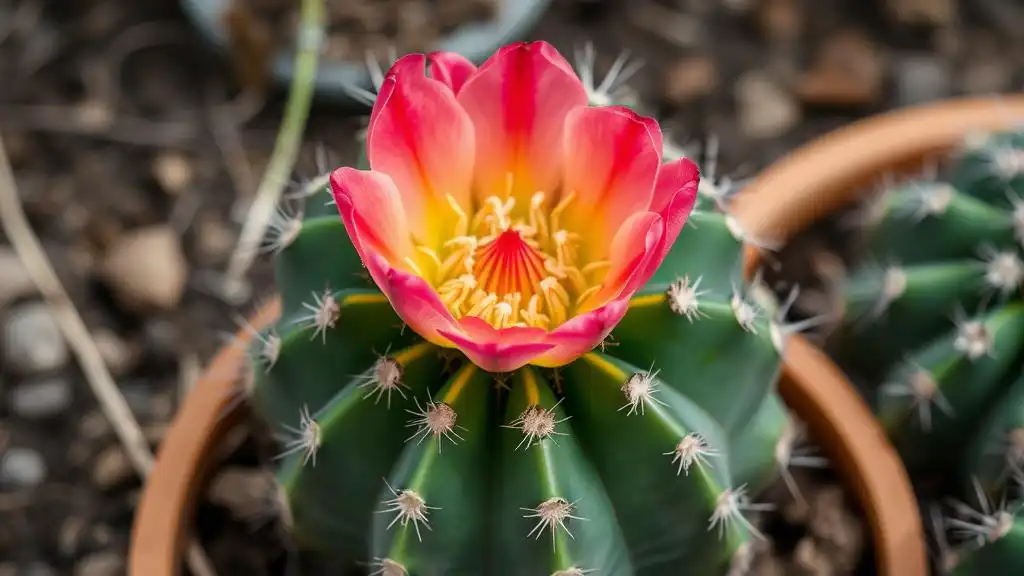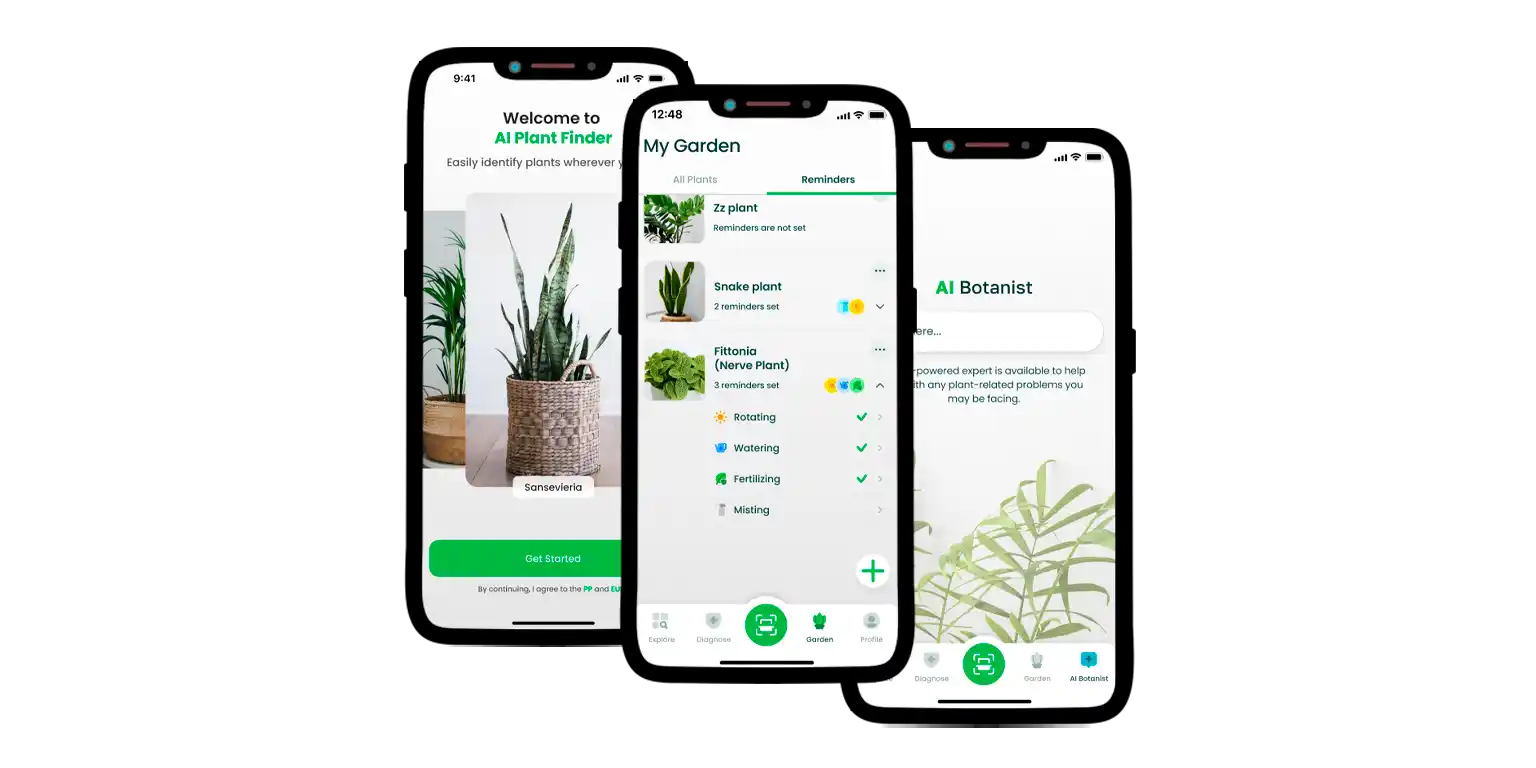
Discover the allure of cacti as resilient houseplants, their blooming secrets, unique foliage, and essential care tips. Dive into the fascinating world of cacti care and cultivation for a thriving desert oasis indoors. Get expert advice and explore AI Plant Finder as your plant assistant.
Contents:
When it comes to choosing houseplants, most people think of cactuses as the most resilient and adaptive members of the green world. These unique yet bizarre plants appear in various sizes, shapes, colors, and forms that turn the interior spaces into cozy and aesthetically beautiful areas to live in. Nevertheless, like any other plant species, cacti require the right care to stay pleasing to the eyes and to remain healthy.
Do cacti grow flowers? What do they actually need to thrive? In this material, we are going to dispel some beliefs surrounding these remarkable creatures, learn more about their nature, and look at one more way to improve your gardening experience for good.

What Are Cactuses and Why Are They Getting So Popular?
Cacti, or cactuses, are succulents native to the countries of America (i.e., the southwestern part of the United States, Mexico, and South America) that usually grow in hot and dryland environments. Although cactus houseplants are getting so popular in different regions of the planet, they still bear a range of original unique features that allow them to conserve water and withstand extreme temperatures.
For those who are into indoor gardening but do not really have green fingers, cacti remain a preferred option because of their fascinating features. For beginners, cacti are incredibly low-maintenance for they require minimal water and attention compared to many other houseplants. This makes them an ideal option for those who want to get a plant but do not have enough time to take care of it by schedule.
Can Cacti Bloom?
Although the culture promotes the image of a tough and spiky plant, cactuses actually produce some of the most beautiful and vibrant flowers in the plant kingdom. Do all cacti flower then? No, there exist various cactus plants, some of which cannot bloom at all, while others can but do it in the right environmental conditions only. This means that they can do it sporadically when provided with specific pollinators, relatively low humidity levels, significant temperature fluctuations, and intense lighting.

However, when one manages to create an atmosphere closer to the one of nature, cactus flowers may only last for a few days to a week. The exact timing of a cactus bloom can vary depending on factors such as the species of a cactus, the growing conditions, and even the time of year. Some cacti bloom only once a year, while others may bloom multiple times throughout the growing season.
Thus, if you wish to make your cacti bloom, make sure you find out what type of cactus it is exactly and learn about its care needs. Did not you think that it was easy?
External Assistance For Those in Need
By the way, for those who want to witness cacti flowers, we recommend that you use digital plant assistants. With the use of such platforms, you can easily find the required info and not fail. One of the apps that has proven itself as a reliable solution is AI Plant Finder, an innovative software to identify plants and their diseases via just one photo, keep track of your plants, and even more.
Want to know the plant species of your cactus? Take a picture of the plant right in the app and enjoy the profound information suggested by prominent botanists, plant experts, and other users. Make your experience easier with AI Plant Finder and its community of dedicated plant enthusiasts from all over the world.

Cactus Foliage: Leaves or Not?
One of the intriguing aspects of cacti is their unique foliage — or lack thereof. Most cactus lovers wonder “Do Cactuses Have Leaves?” Unlike other plants, cacti seem to be aliens that developed their own structures used for CAM photosynthesis, a photosynthetic carbon dioxide fixation adaptation that stores water and allows plants to flourish in semi-arid or drought-prone areas on a seasonal basis.
Instead of leaves, they have different types of branches with scales and spines, pads, and succulent stems. Spines, for instance, help to keep animals and insects away and shield the plant from invaders. They also give the cactus's surface shade, which lowers water loss via transpiration. Pads, the leaf-like structures that may be present on the cacti, serve a similar function to leaves, though these appear as modified stems in reality.
Does a cactus have leaves? That is a tricky question, for they do not have leaves in the traditional meaning of this word. Due to the conditions in which cactuses usually grow, they managed to evolve into what we see now – plants with similar but non-leaf unique structures.
Caring for Cacti: What Do Cacti Need?
Although some people might think that cacti do not have special care needs, they actually do. Nevertheless, caring for these plants is a relatively straightforward process.
Light Requirements
As we have stated before, one of the most important aspects of caring for cacti is providing them with the right growing conditions. Most cacti prefer bright, indirect sunlight, so be sure to place them near a south- or west-facing window where they can receive plenty of natural light.
Water Requirements
Besides, cacti have unique water requirements compared to other houseplants. While they are drought-tolerant and can go for extended periods without water, they still need occasional watering to thrive. The most productive method is called “soak-to-dry”. It means that you should give deep watering sessions and leave the soil to completely dry out.

Soil Requirements
When it comes to soil, cacti prefer a well-draining mix that mimics the sandy, rocky soils of their native habitats. You can purchase a pre-made cactus soil mix or create your own by combining equal parts potting soil, sand, and perlite. One should avoid using regular potting soil, for it tends to retain too much moisture and can lead to root rot.
Besides, plant lovers frequently come across myths like “Coffee grounds are good for cactuses”. Do cacti like coffee grounds as they say? In fact, it is better to avoid such organic ideas, for coffee, when put directly in the soil, can quickly attract mold, release caffeine, and drastically reduce pH. Coffee is a good fertilizer, though, but when composted and carefully prepared for the plants out of the pots only.
To make sure you take care of the cactuses correctly, opt for expert-supported platforms, like AI Plant Finder. By following the tips specific to your own plant, the AI Plant Finder app can help you find the appropriate solutions and suggest the approach that best suits your plant’s needs. Create a cactus garden of your dreams and keep it healthy with ease.